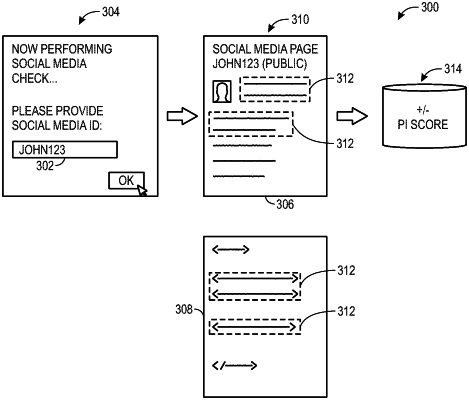| CPC G06F 21/6245 (2013.01) [G06F 16/9536 (2019.01); G06F 16/9538 (2019.01); G06F 21/60 (2013.01); G06Q 30/0203 (2013.01); G06V 10/70 (2022.01); G06V 30/41 (2022.01); G06V 30/19 (2022.01)] | 20 Claims |

|
1. A tangible, non-transitory, computer readable medium comprising instructions that when executed by one or more processors of the computer cause the computer to:
receive a private information protection (PIP) scoring request pertaining to a particular user;
generate a PIP score by:
capturing social media data of the particular user, by:
identifying a social media profile of the particular user;
accessing a social media page associated with the social media profile; and
crawling underlying code of the social media page to identify private information of the particular user that is available on the social media page;
aggregating the private information of the particular user that is available on the social media page to a set of PIP factors used in a PIP analysis;
capturing settings associated with one or more Internet of Things (IOT) devices from one or more service providers of the IOT devices, by requesting the settings via an application programming interface (API) of the one or more service providers;
aggregating the settings to the set of PIP factors;
analyzing the private information of the particular user that is available on the social media page and the settings aggregated to the set of PIP factors to determine a level of private information disclosure; and
identifying the PIP score based upon the analyzing the private information and settings aggregated to the set of PIP factors;
present the PIP score to a graphical user interface, indicating a level of private information protection;
provide the set of PIP factors to a machine learning engine configured to:
receive sets of PIP factors associated with a plurality of users, and
perform a machine learning analysis on the received sets of PIP factors to identify a previously unknown private information sharing pattern common to a subset of two or more of the plurality of users, and
based upon the identified private information sharing pattern common to the subset of the plurality of users, provide a tailored notification via a second graphical user interface to a member of the subset of the plurality of users, indicating the identified private information sharing pattern.
|